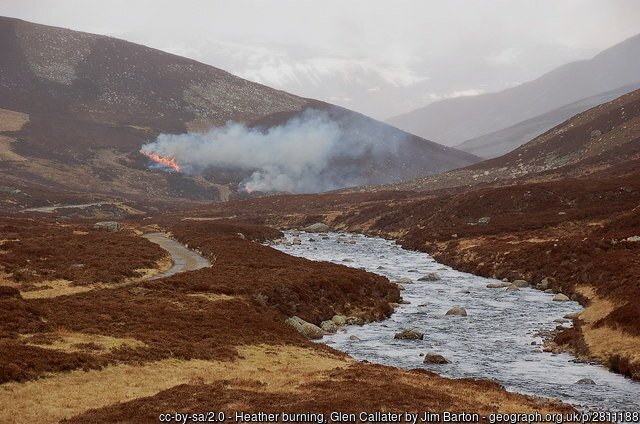The Wildlife Management & Muirburn (Scotland) Act is passed!
Today marks an auspicious day for Scottish wildlife. It is the day that the Wildlife Management & Muirburn (Scotland) Bill 2024 was voted through by a majority of Scottish Parliament Members to become law.
There are many animal and environmental charities, groups and individuals who have campaigned for a very long time for this - namely the REVIVE coalition consisting of the League Against Cruel Sports, OneKind, Raptor Persecution UK, Common Weal and Friends of the Earth Scotland.
But what exactly will this mean for how Scotland’s countryside and its inhabitants? Here is a brief summary:
No more glue traps or snares
In a momentous win for wild animals in Scotland - this Act prohibits the sale and use of glue traps in Scotland. As the name suggests, these work by catching animals as they step onto a surface laced with a sticky glue so that they are unable to free themselves. The animal is then left for potentially long periods before being found and “dispatched”, susceptible to exhaustion from trying to escape, dehydration, starvation and vulnerability to predators.
A snare
Similarly, snares consist of a wire noose which when stepped on will trap an animal by a limb or neck, causing them immeasurable pain and leaving them open to the same fates as above. So we are delighted that the use of these devices is now also illegal in Scotland.
Licences required for other forms of wildlife trap
There are many other types of trap that are used to capture and kill wildlife in Scotland, most of which cause pain and suffering - sometimes for many hours. Before this Act, anyone could set a trap. But now, there will be at least a requirement to have undergone training and applied for a license, encouraging better use and traceability if one is found to be set illegally. This is a step in the right direction, but of course will not solve the animal welfare issues associated with traps.
A crow trap
Licences required for landowners to allow grouse shooting
Whilst we would never condone the shooting of any living being for ‘sport’, this Act is the greatest intervention to grouse shooting to date. The problem is not just the shooting of grouse for sheer pleasure, but there is a proven and historic link between grouse moors and the persecution of rare birds of prey (who predate on grouse) by landowners who want the maximum grouse population possible. Species like hen harriers, peregrine falcons and the protected golden eagle have been serially killed on or close to grouse moors for many years.
Golden eagle
Other consequences of mismanaged grouse moors have included the use of veterinary medicines for treatment of wild birds at scale through medicated grit, the construction of hill tracks in sensitive habitats and the use of toxic lead for ammunition for shooting.
The Act will introduce a licensing scheme to hopefully reduce the harmful impacts of grouse moor management, which has been hitherto completely unregulated.
Red grouse
Licences required to carry out muirburn
Muirburn is the controlled burning of patches of vegetation to encourage new heather growth for grouse to feed on, often carried out on Scottish peatlands - a globally important natural store of carbon. When landowners do not control their muirburn properly, they end up damaging important layers of vegetation which protect the peat underneath, causing the peat to dry out.
The short-term risk of this is wildfires. When peat is dried out, it becomes highly flammable, and the chance of it spreading across the landscape, especially in warmer and windier conditions, increases exponentially.
The long-term risk is that when peat dries out, it decomposes faster and releases its previously locked-up carbon into the atmosphere. Given the current climate crisis, intensive emission of long-stored carbon is something that must be protected against at all costs.
Muirburn
There are additional risks that once damaged, peat is more easily eroded during periods of intense rainfall, and can leach into watercourses and contaminate drinking water. Burning can also lead nesting birds to flee their nests, which may possibly be destroyed if the fire reaches them.
But it will now become law that anyone wishing to make muirburn on their land will have to apply for a license to do so, and only up to a certain depth. This tighter control on who is making muirburn and how, could help avoid multiple levels of disaster for wildlife, the natural environment and the planet.
Increased resource for investigating wildlife crime
This Act affords extra powers to the Scottish Society for the Prevention of Cruelty to Animals (SSPCA) to assist Police Scotland in gathering evidence for suspected wildlife crime. Given their expertise, as well as the ever-strapped nature of Police Scotland’s resources, this will greatly improve the chances of evidence being collected and justice being served in offences against wildlife.
It may not go as far as we would want to protect our precious wild animals - this Act is a great first step towards greater regulation and accountability of Scottish landowners and grouse moor managers. Congratulations to all who worked so hard to see this come to fruition!






